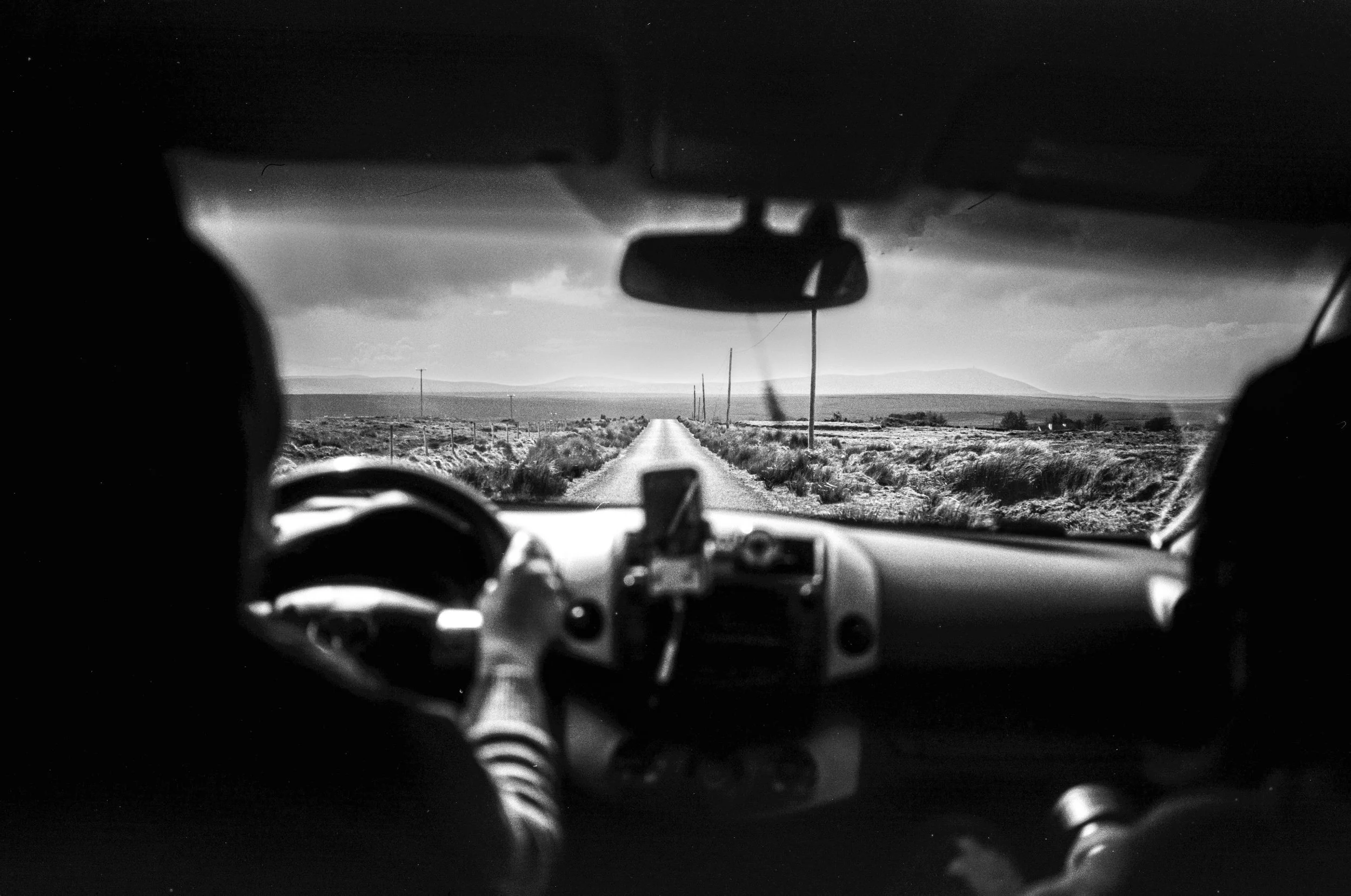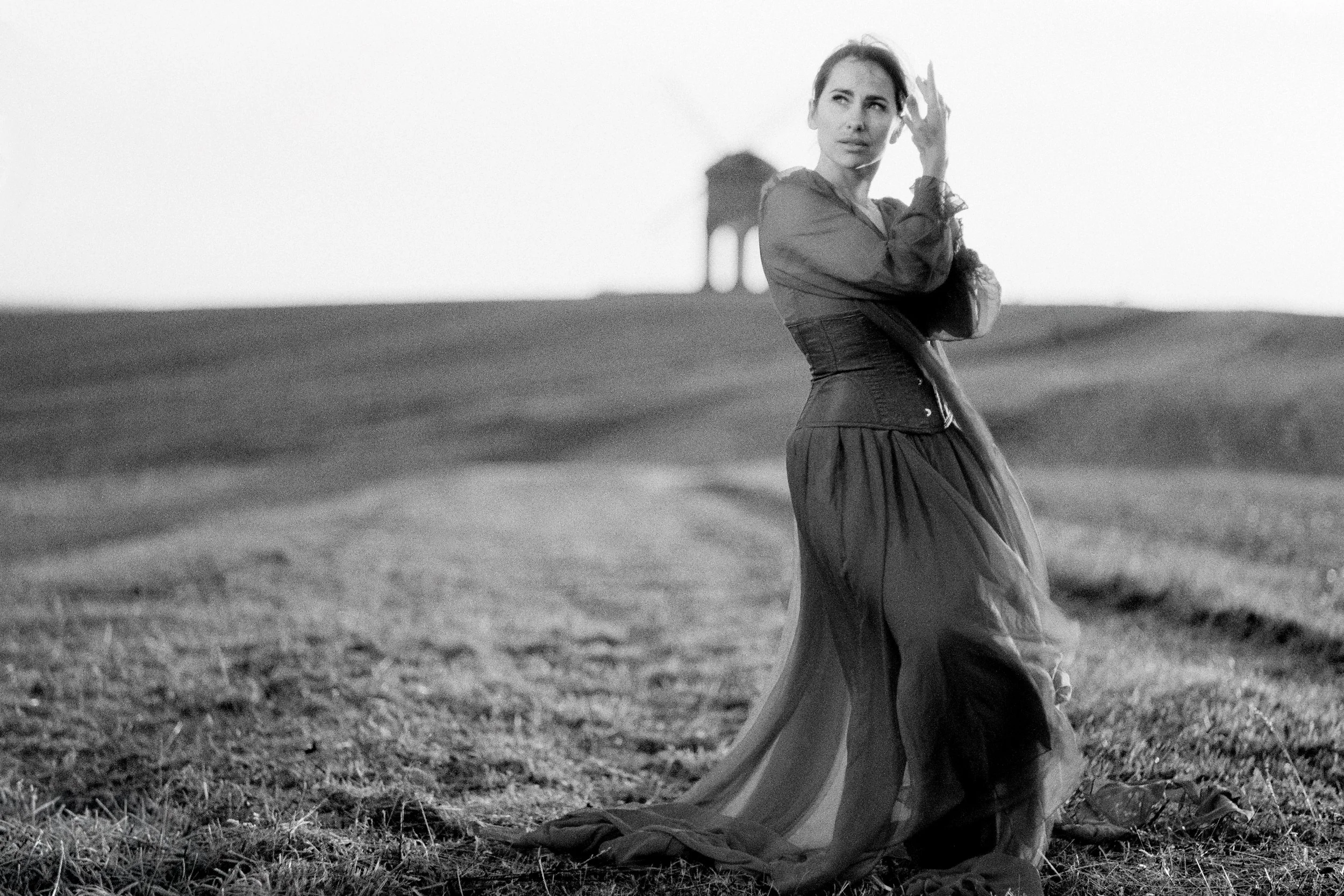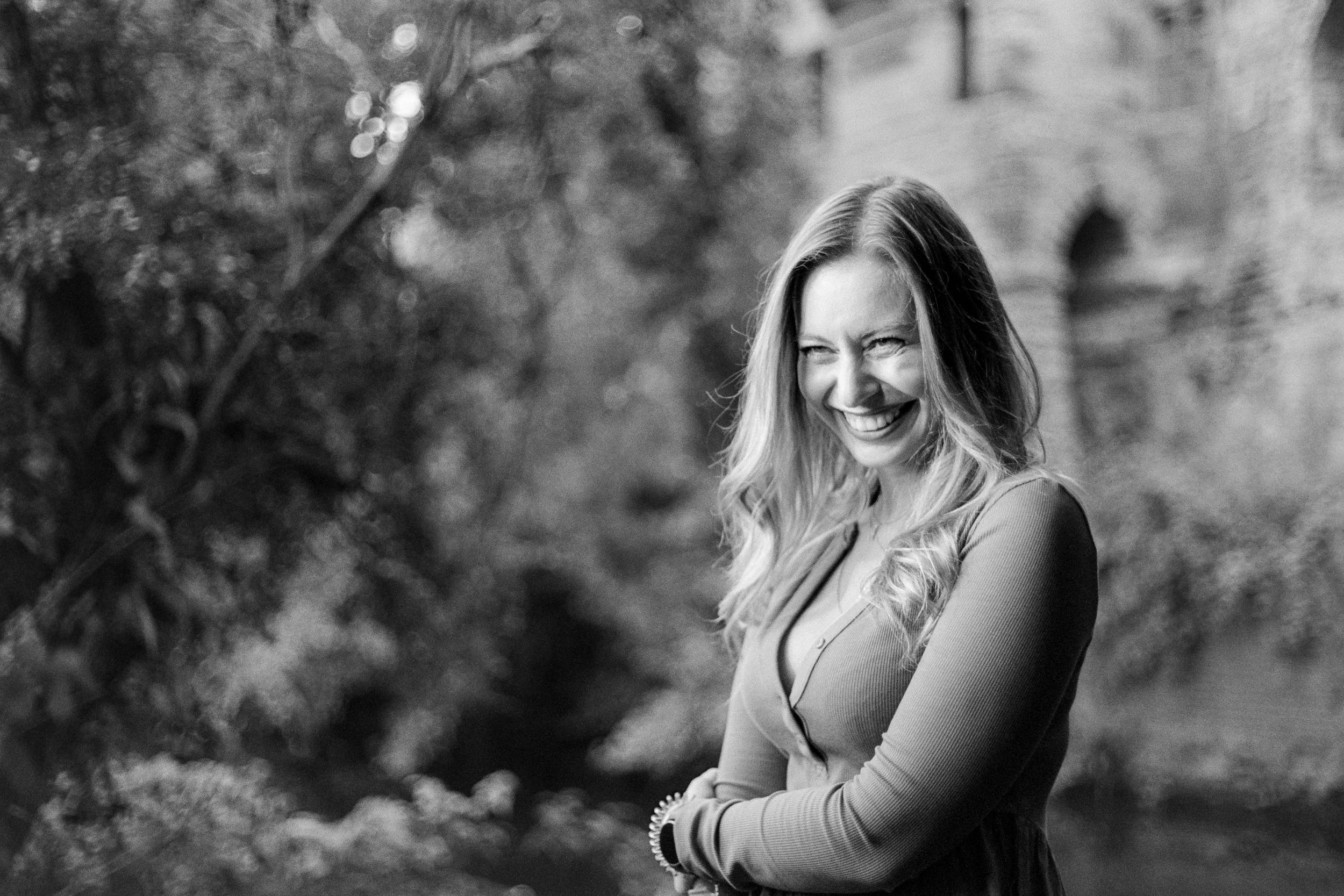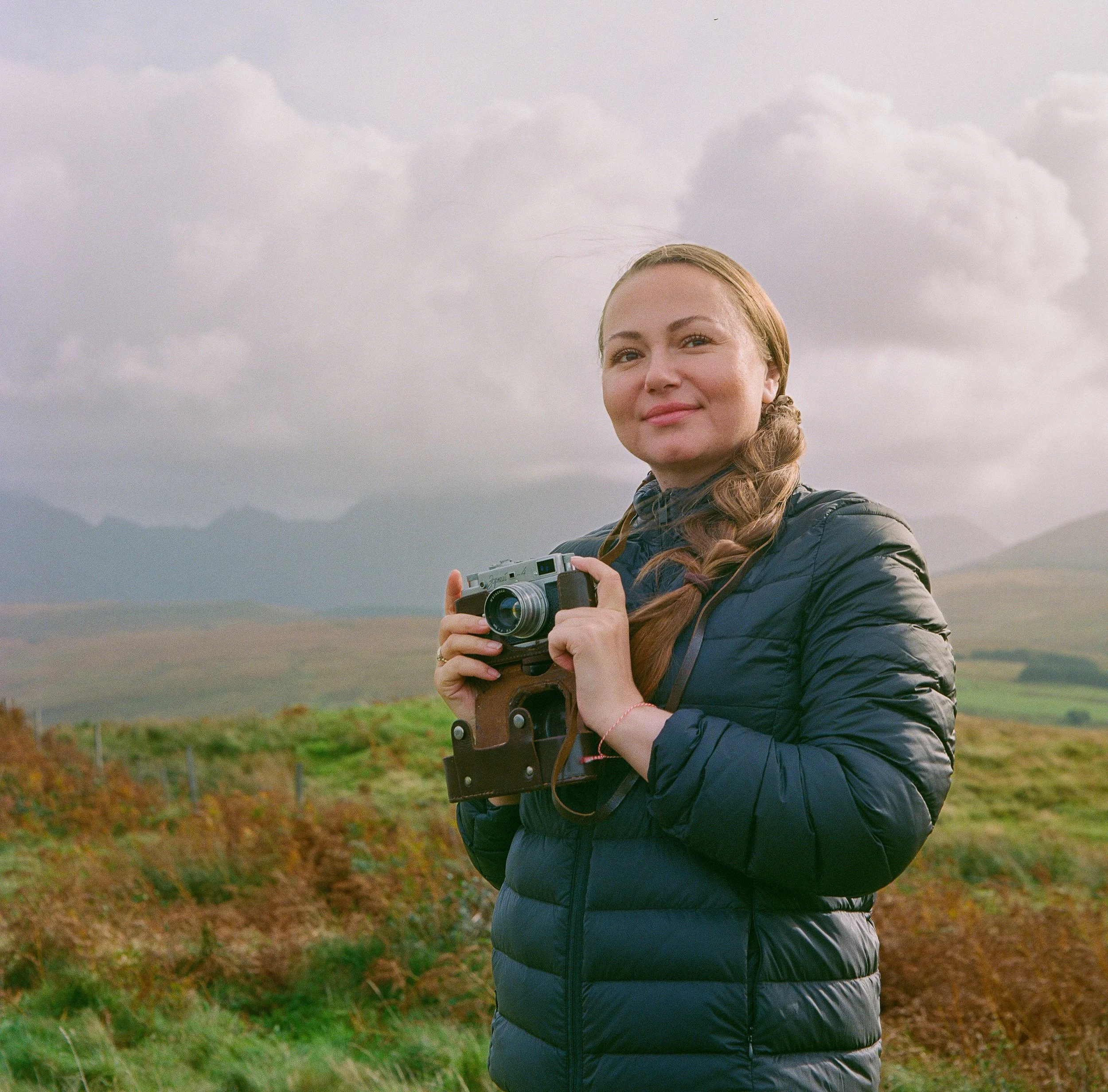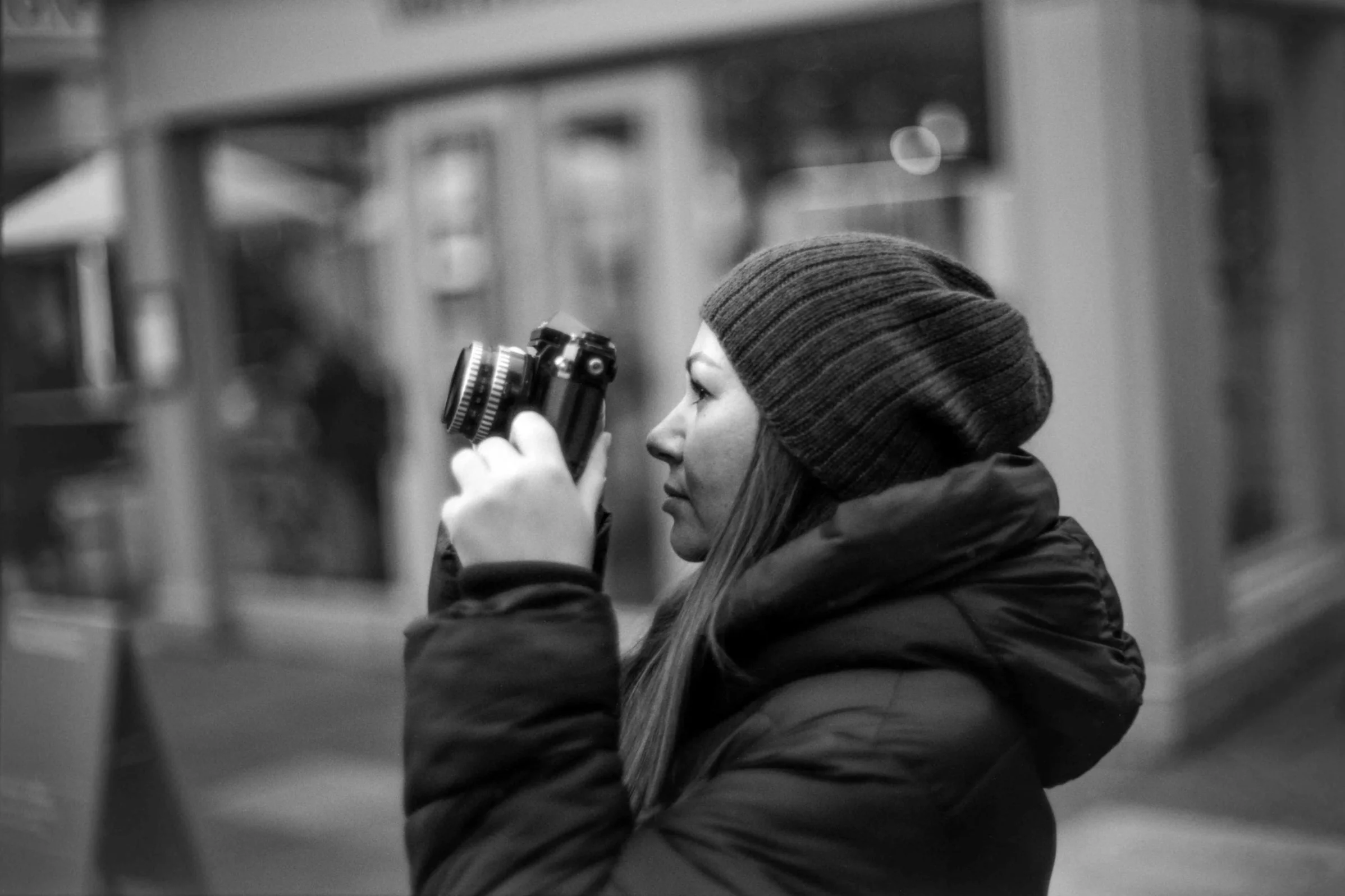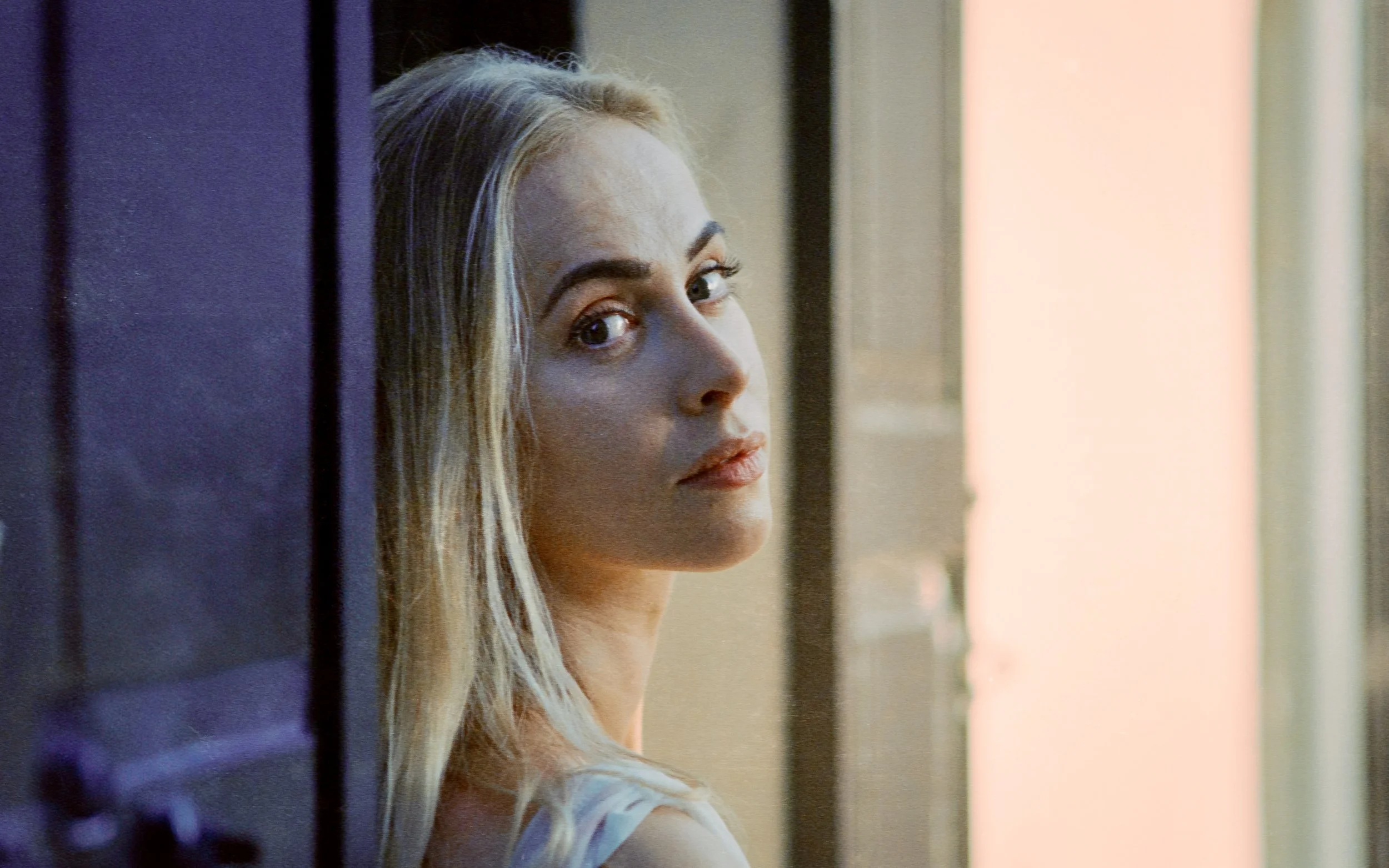Directional Light on Film: Building the Chiaroscuro Portrait (Part II)
Chiaroscuro begins with a simple idea: the difference in brightness between the lit side of the subject and the shadow side. This difference is the light ratio, and it determines how sculptural or gentle the portrait will appear.
A small difference between the two sides creates a subtle, rounded shape. A larger difference produces the recognisable sculptural depth associated with classical portraiture and mid-century cinema. At even stronger ratios, the shadows begin to take on narrative weight, and the illuminated planes appear almost architectural.
Push and Pull Film Processing: How Development Time Shapes Tonality, Density, and Cinematic Rendering
Many photographers assume push and pull decisions only occur inside the camera, but metering differently is only the first half of the process. The exposure placed on the film creates the latent image, and then the lab determines whether that image becomes fully usable or collapses in the extremes. Rating Portra 400 at 1600, for example, under-exposes the film by two stops. The film does not become a 1600-speed stock; it simply receives less light. The tonal behaviour associated with pushing—deeper shadows, higher contrast, more pronounced grain—emerges in development, not at the moment of exposure. Pulling works the same way. Over-exposing the film provides additional highlight information, but only reduced development time preserves that latitude. Push and pull are therefore collaborative acts: the photographer controls exposure, and the lab controls interpretation.
Directional Light on Film: The Foundations of Depth, Shape, and Tonal Control (Part I)
Chiaroscuro is the controlled use of directional illumination to create depth, dimensionality, and tonal separation inside a portrait. The term is sometimes used loosely to describe dramatic or shadow-heavy images, but that simplification does not describe its real function. Chiaroscuro is not an effect. It is not an aesthetic layer applied to an image. It is a precise lighting system that defines the physical structure of a portrait through the relationship between illuminated planes and shadow planes.
Why Analogue Portrait, Wedding, and Event Studios Are Rare in the UK: Infrastructure, Craft, and the Global Landscape
Analogue film photography is a working professional medium in cities such as Los Angeles, Berlin, Tokyo, and New York. Portrait studios, wedding photographers, and event specialists in those places continue to work on film because the infrastructure that supports analogue workflows never disappeared. Labs stayed open, cinematographers kept shooting on film, universities continued teaching it, and creative industries carried on commissioning it as part of their normal practice. Film remained part of the working vocabulary rather than becoming a curiosity. I’ve worked throughout the UK, USA and Europe over the decades, and since the late 1990’s the differences have grown between countries and continents for very different reasons.
Cinematic Portraits on Film – Chesterton Windmill, Leamington Spa, Warwickshire, West Midlands
Chesterton Windmill is a setting that behaves almost like a stage. It stands alone above Leamington Spa, a solitary architectural structure surrounded by uninterrupted landscape, and this isolation gives it a rare cinematic profile. For portrait photographers working across Warwickshire, the West Midlands and the Cotswolds, it is one of the few local landmarks that retains a sense of timelessness — and at sunset, it becomes even more atmospheric. For this portrait session with Olga, the rhythm of the falling sun controlled everything. Forty-five minutes from start to finish meant two rolls of film, no resets, no time to revise angles, and no spare exposures. Everything had to be prepared, executed and adapted fast.
Why Real Film Photography Is the Only True Heirloom in the Age of AI
There was a time when photography meant one simple thing: light recorded on a physical surface. Every image was a direct imprint of the world — photons hitting emulsion, a moment translated into chemistry. Today, photography exists in a different landscape. We live in an era of filters, machine learning, and algorithms that can fabricate faces, landscapes, and entire realities that never existed. In a feed full of digital illusion, a true photograph — one that exists as a tangible artifact — has become something more than nostalgic. It has become proof.
When the Light Misbehaves – The Beauty of Imperfection in Film Photography
In the world of film, perfection doesn’t exist — and that’s the point. Every roll carries a trace of risk. A flicker of light might slip past a seal. A frame might shift by a fraction. Grain might swell unexpectedly in the shadows. These are not errors to correct. They’re the heartbeat of something real.
At Liquid Light Whisperer, those marks of imperfection aren’t flaws. They’re fingerprints — small proofs that every image was made by hand, in light, with care, and without the safety net of an undo option.
Newborn on Real Film: A Three-Week Story in Light
It’s a beautiful thing when someone trusts me to photograph their newborn. These aren’t just pictures — they’re the first memories of a life just beginning. One day, this little girl will show these portraits to her own children and grandchildren. They’ll see the faces of their ancestors, the hands that first held their mother and grandmother, and the beginning of their family story.
The Secret Behind Film’s Tonal Depth: How Pyro Developers Shaped Black and White Photography
In the early to mid-twentieth century, Pyro found its most famous advocates. Ansel Adams, Edward Weston, and other Zone System pioneers relied on Pyro for its long tonal curve and ability to handle extreme contrast scenes. Adams’ negatives from Yosemite, printed decades later, still exhibit the smooth highlight roll-off typical of Pyrogallol development. Pyro allowed these photographers to “place” tones with mathematical precision — the foundation of the Zone System itself.
Pyro Film Development with Zone Imaging 510 Pyro: The Liquid Light Lab Approach
There are few developers that define the tonal language of black and white film the way Pyro does. It’s one of the most advanced formulations ever created — prized for smooth highlights, long tonal transitions, and a calm, sculptural rendering of light.
Launching Liquid Light Lab: A Boutique Film Development Service for the UK
Film photography deserves more than a production line. That’s why I started Liquid Light Lab — a hand-crafted film processing and scanning service built by a photographer, for photographers. The Lab is now open, and it’s already been trusted with rolls that mean the world to people across the UK.
Cinematic Portraits on Location: The Anatomy of a Shoot
Most people think of portraits as studio headshots under flat lights. Safe, predictable, and forgettable. But a portrait doesn’t have to be like that. At Liquid Light Whisperer, every portrait session is cinematic. On location, I create not just an image, but a scene — a memory made real, captured on film.
This article walks you through exactly what happens when you book a cinematic portrait shoot with me, from the first call to the final photographs. If you’re considering a portrait session, this is what you can expect.
Film Photography: Authentic Portraits That Last a Lifetime
In today’s world, it’s easy to confuse digital editing with photography. Scroll through social media and you’ll see endless images smoothed, graded, and altered until the original moment is barely recognisable. That isn’t photography — it’s post-production. It’s editing.
Black and White Photography as Living Memory
For years, I thought colour was the best way to preserve memories. It felt modern, vivid, and real — the perfect match for the moments I wanted to hold on to. But colour doesn’t last the way we imagine.
Prints fade, slides shift, and digital colour grades fall out of fashion. What looked stylish a few years ago now feels dated. Even today’s digital RAW edits tied to popular “film look” presets eventually reveal themselves as fads.
Black and white is different.
Why Resolution Matters: Getting the Most From Your Film Scans
Every frame of film is an investment. Whether it’s your wedding day, your child’s first steps, or a portrait you’ve carefully planned, that negative is unique and irreplaceable. The scan is what decides how much of it you’ll actually see.
Most labs don’t deliver the full potential of film. That’s why I built Liquid Light Lab — to give your negatives the scans they deserve, with no shortcuts.
Nationwide service: wherever you are in the UK — London, Manchester, Anglesey, Edinburgh, Orkney, Belfast — you can post your film directly to me and receive archival-quality scans back.
Why Film Photography Feels Alive in the Digital Era
Digital photography gave us precision, speed, and infinite repetition. It perfected the technical image — but in doing so, it stripped away something that analog never lost: a sense of life.
Film photography endures because it feels different. It slows us down, resists instant gratification, and produces images with texture and presence. In a world of disposable content, film stands out as something alive.
Announcing the Opening of Liquid Light Lab
I am pleased to announce the launch of Liquid Light Lab — a dedicated film processing service built for those who value craft, character, and precision in their analogue photography.
For years, I’ve been immersed in both sides of the photographic world — creating work with musicians, Hollywood actors, directors, and everyday clients who simply wanted something exceptional, and guiding fellow photographers through the nuances of analogue technique. Alongside this, I’ve refined my own approach to developing film — an approach rooted in consistency, detail, and the same artistic sensibility that runs through my photography.
Lenses that Render Light Uniquely – Vintage Glass Magic
Where modern optics are designed to correct, suppress, and polish, older lenses allow light to express itself in ways that feel alive. The edges aren’t always sharp. The coatings flare in unpredictable halos. The bokeh swirls or doubles or melts away entirely. What many engineers considered flaws, photographers now treat as signatures — fingerprints left by history on light itself.
The Lomography Daylight Developing Tank — My Final Impressions.
It’s not every day that a company like Lomography asks you to test a prototype. When their team invited me to run the new Daylight Developing Tank through its paces, I was genuinely pleased. Lomography has long been at the heart of keeping film culture alive worldwide, and being part of their R&D process — before the public even got a glimpse — was a privilege.
The result was a set of articles about my experience published across their international network in four languages.
Analogue as Memory – Why Negatives Outlast the Cloud
When an image is exposed on film, it isn’t yet a photograph. It lives invisibly in the emulsion, suspended between existence and nothingness — a latent ghost of light. At this stage it can still be erased, fogged, or lost entirely, but it is there, waiting. Only when it meets developer does it reveal itself, and only when it meets fixer is it frozen forever. That alchemy — the moment when something ephemeral becomes permanent — is what makes film different. Memory doesn’t just appear; it is conjured, stabilised, and preserved.



